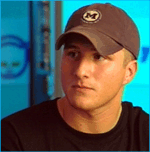 |
invented p2p with Napster
|
| Shawn Fanning (1980) | |
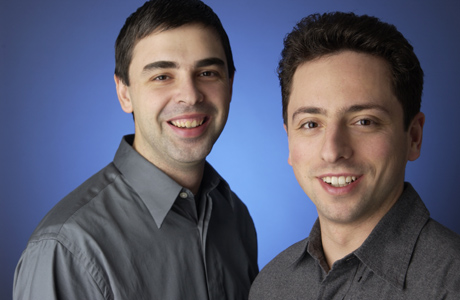 |
co-founded the Google internet search engine
|
| Larry Page (1973), Sergey Brin (1973) | |
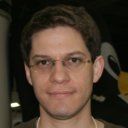 |
is a Mexican free software programmer, best known for starting the GNOME and Mono projects
|
| Miguel de Icaza (1972) | |
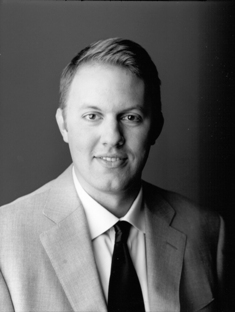 |
is best known as a cofounder of Netscape Communications Corporation and co-author of Mosaic, the first widely-used web browser
|
| Marc Andreessen (1971) | |
 |
is a Finnish software engineer best known for initiating the development of the Linux kernel
|
| Linus Torvalds (1969) | |
 |
is the creator of the PHP programming language
|
| Rasmus Lerdorf (1968) | |
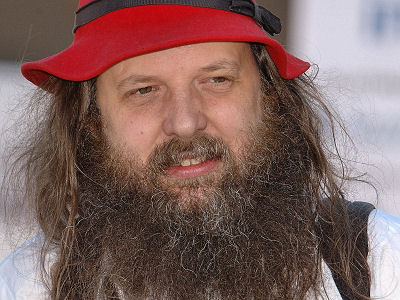 |
is a computer programmer heavily involved in the development of the Linux kernel since its early days
|
| Alan Cox (1968) | |
 |
is best known for proposing the concept of Cascading Style Sheets
|
| Hĺkon Wium Lie (1965) | |
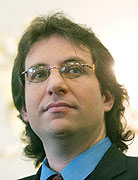 |
is a controversial computer hacker in the United States
|
| Kevin Mitnick (1963) | |
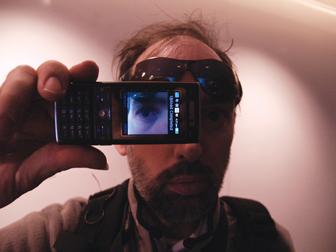 |
|
| Steve Mann (1962) | |
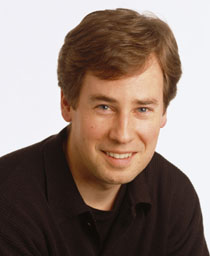 |
was named as one of the three most influential people in the software industry by Software Development Magazine in 1998, along with Bill Gates and Linus Torvalds
|
| Steve McConnell (1962) | |
 |
was the program manager for Windows 1.0 and 2.0
|
| Gabe Newell (1962) | |
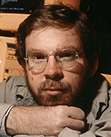 |
|
| Michael Hawley (1961) | |
 |
|
| Brendan Eich (1961) | |
 |
|
| Jaron Lanier (1960) | |
 |
formerly Chief Technology Officer at Microsoft, is co-founder of Intellectual Ventures
|
| Nathan Myhrvold (1960) | |
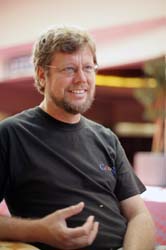 |
is best known as the author of the Python programming language
|
| Guido van Rossum | |
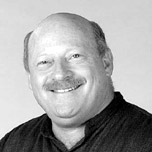 |
is sometimes called "the father of Visual Basic"
|
| Alan Cooper | |
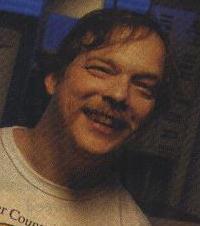 |
|
| Eric S. Raymond (1957) | |
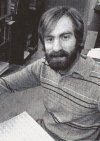 |
is the original author of the popular MS-DOS operating system
|
| Tim Paterson (1956) | |
 |
is an American inventor, entrepreneur, and author. He co-founded Thinking Machines Corporation, a company that developed the Connection Machine, a parallel supercomputer designed by Hillis at MI
|
| Danny Hillis (1956) | |
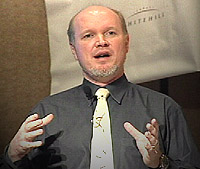 |
is a major contributor to the XML and Atom web standards, and an entrepreneur
|
| Tim Bray (1955) | |
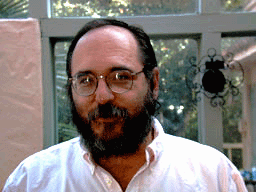 |
|
| Dave Winer (1955) | |
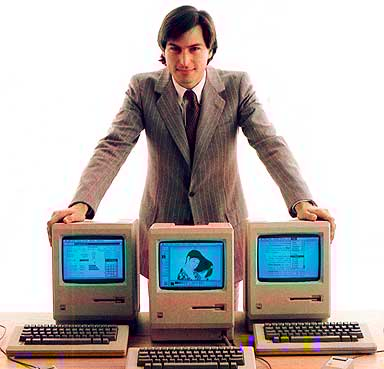 |
is the co-founder and CEO of Apple
|
| Steve Jobs (1955-2011) | |
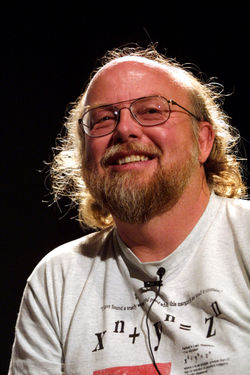 |
is best known as the father of the Java programming language
|
| James Gosling (1955) | |
 |
is best known for developing the Unified Modeling Language with Ivar Jacobson and James Rumbaugh
|
| Grady Booch (1955) | |
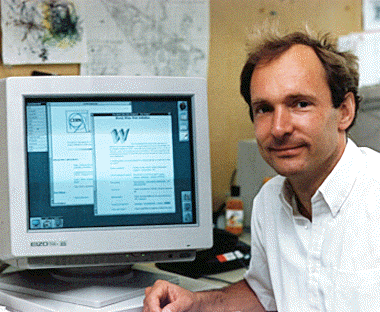 |
invented the World Wide Web and HTML
|
| Tim Berners-Lee (1955) | |
 |
is the Chairman of Microsoft
|
| Bill Gates (1955) | |
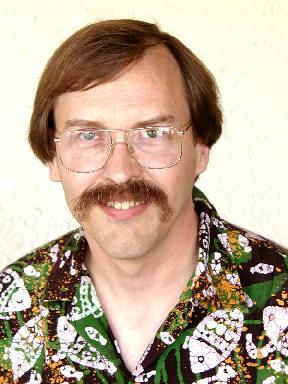 |
created the Perl programming language
|
| Larry Wall (1954) | |
 |
is the founder of O'Reilly Media
|
| Tim O'Reilly (1954) | |
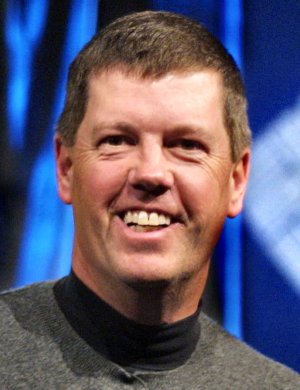 |
is the Chairman of Sun Microsystems
|
| Scott McNealy (1954) | |
 |
co-founded Sun Microsystems
|
| Bill Joy (1954) | |
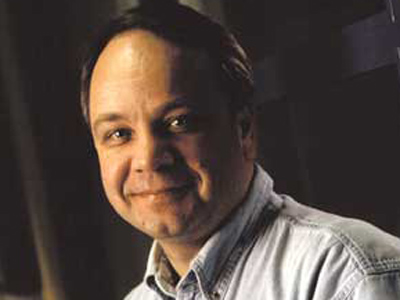 |
|
| Sid Meier (1954) | |
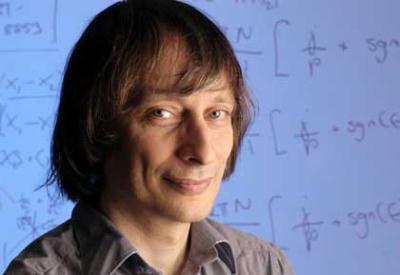 |
pioneer of quantum computing
|
| David Deutsch (1953) | |
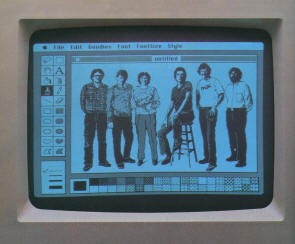 |
was a key member of the original Apple Macintosh development team during the 1980s
|
| Andy Hertzfeld (1953) | |
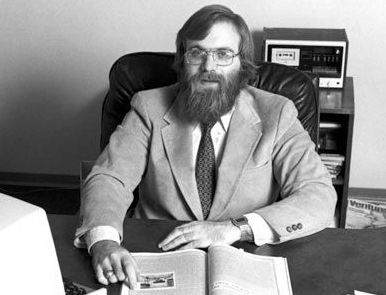 |
formed Microsoft with Bill Gates
|
| Paul Allen (1953) | |
 |
launched the GNU Project to create a free Unix-like operating system
|
| Richard Stallman (1953) | |
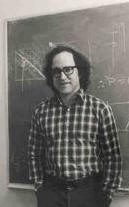 |
was one of the inventors of the RSA algorithm
|
| Adi Shamir (1952) | |
 |
is the founder of Borland, a producer of software development tools
|
| Philippe Kahn (1952) | |
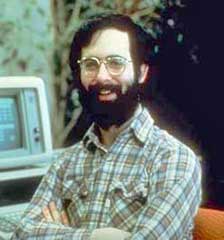 |
is the co-creator, with Bob Frankston, of the VisiCalc spreadsheet program
|
| Dan Bricklin (1951) | |
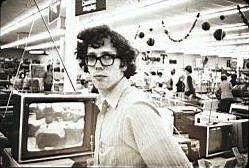 |
designed and implemented HyperCard, the first popular hypermedia system
|
| Bill Atkinson (1951) | |
 |
developed the C++ programming language
|
| Bjarne Stroustrup (1950) | |
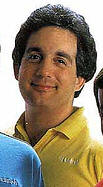 |
is the founder of Lotus Development Corporation and the designer of Lotus 1-2-3, the "killer application" often credited with making the personal computer ubiquitous in the business world in the 1980s
|
| Mitch Kapor (1950) | |
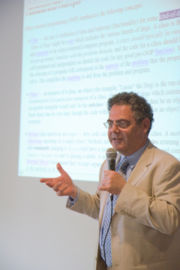 |
developed the Eiffel programming language
|
| Bertrand Meyer (1950) | |
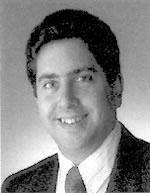 |
is the CEO of Cycorp, Inc. of Austin, Texas, and has been a prominent researcher in artificial intelligence, especially machine learning (with his AM and Eurisko programs), knowledge representation, blackboard systems, and "ontological engineering" (with his Cyc program at MCC and at Cycorp)
|
| Doug Lenat (1950) | |
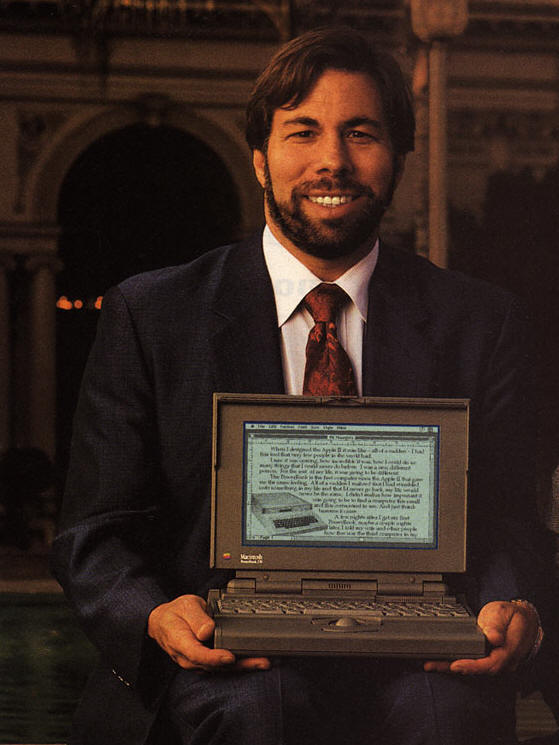 |
co-founded Apple Computer, with Steve Jobs in 1976 and created the Apple I and Apple II computers in the mid-1970s
|
| Steve Wozniak (1950) | |
 |
is the co-creator with Dan Bricklin of the VisiCalc spreadsheet program and the co-founder of Software Arts, the company that developed it
|
| Bob Frankston (1949) | |
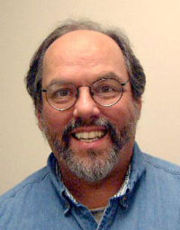 |
invented the wiki
|
| Ward Cunningham (1949) | |
 |
was one of the twelve engineers who worked on the original IBM PC, developing the computer's ROM BIOS code
|
| David Bradley (1949) | |
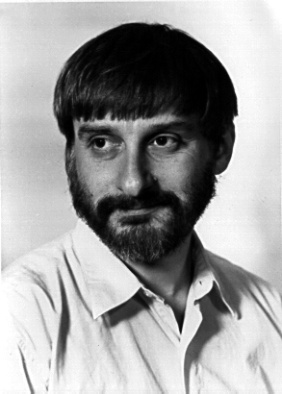 |
is well known for his work in randomness in computing, algorithmic complexity and intractability, foundations of mathematics and computer science, algorithmic probability, theory of computation, and information theory
|
| Leonid Levin (1948) | |
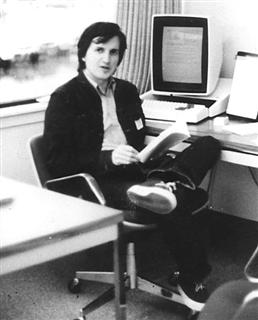 |
as head of Microsoft's application software group, oversaw the creation of Microsoft's flagship office applications
|
| Charles Simonyi (1948) | |
 |
is the discoverer of several important graph algorithms, including Tarjan's off-line least common ancestors algorithm, and co-inventor of both splay trees and Fibonacci heaps
|
| Robert Tarjan (1948) | |
 |
is the creator of the Tcl scripting language and is well known for his work in distributed operating systems, high-performance file systems, and user interfaces
|
| John Ousterhout | |
 |
is most celebrated for his work on public-key encryption with Len Adleman and Adi Shamir, specifically the RSA algorithm
|
| Ronald Rivest (1947) | |
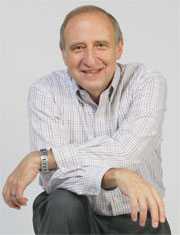 |
|
| Ben Shneiderman (1947) | |
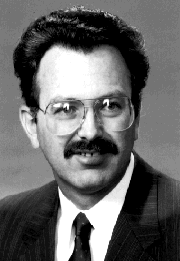 |
wrote the database program dBASE II
|
| Wayne Ratliff (1946) | |
 |
received the Turing Award, in recognition of his fundamental contributions to the theory of computation, including the complexity-based theory of pseudorandom number generation, cryptography, and communication complexity
|
| Andrew Yao (1946) | |
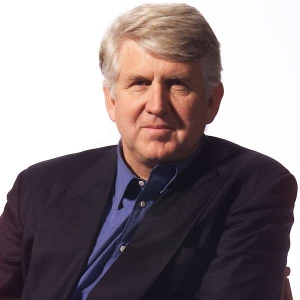 |
|
| Robert Metcalfe (1946) | |
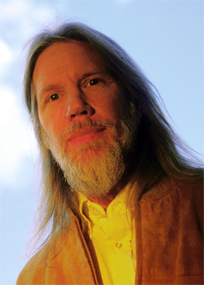 |
|
| Whitfield Diffie (1944) | |
 |
is the co-founder and CEO of Oracle Corporation
|
| Larry Ellison (1944) | |
 |
is best known as the author of Minix, a free Unix-like operating system for teaching purposes, and for his computer science textbooks, regarded as standard texts in the field
|
| Andy Tanenbaum (1944) | |
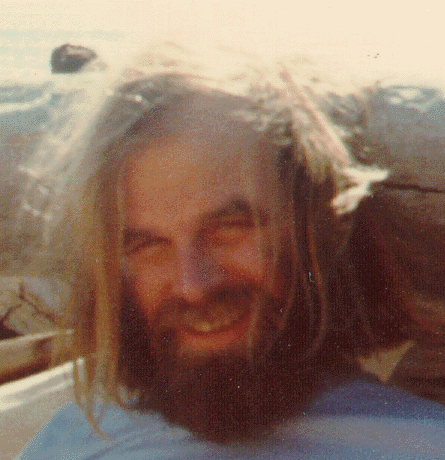 |
has contributed to the building of several major database and transaction processing systems, including the groundbreaking System R while at IBM, Terraserver, and Skyserver for Microsoft Among his more well known achievements are granular database locking, two-tier transaction commit semantics, and the data cube operator for data warehousing applications
|
| Jim Gray (1944-2007) | |
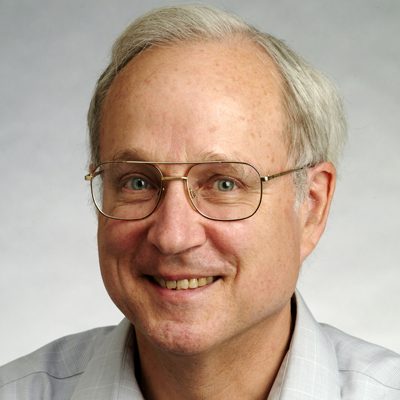 |
was one of the founding members of Xerox PARC in 1970, where he worked in the Computer Science Laboratory (CSL). His now-famous vision of a personal computer was captured in the 1972 memo entitled "Why Alto?". In 1973, the Xerox Alto, with its three-button mouse and full-page-sized monitor was born, and is now considered to be the first actual personal computer
|
| Butler Lampson (1943) | |
 |
produced a popular tool to retrieve erased data from DOS disks, which was followed by several other tools which were collectively known as the Norton Utilities
|
| Peter Norton (1943) | |
 |
is commonly referred to as one of the "founding fathers of the Internet" for his key technical and managerial role, together with Bob Kahn, in the creation of the Internet and the TCP/IP protocols which it uses
|
| Vint Cerf (1943) | |
 |
is an American pioneer of computer science notable for his work with the B programming language and his shepherding the UNIX and Plan 9 from Bell Labs operating systems
|
| Ken Thompson (1943) | |
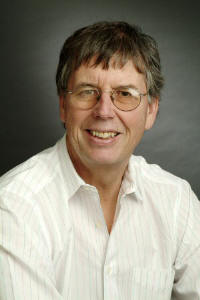 |
|
| Michael Stonebraker (1943) | |
 |
founded Atari
|
| Nolan Bushnell (1943) | |
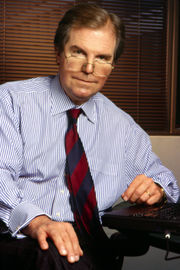 |
|
| Nicholas Negroponte (1943) | |
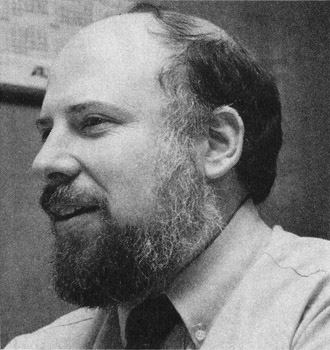 |
was an American human-computer interface expert best-known for starting the Macintosh project for Apple Computer in the late 1970s
|
| Jef Raskin (1943-2005) | |
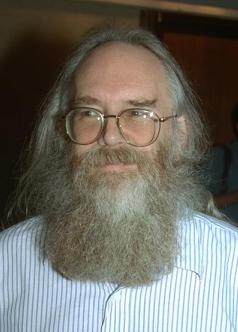 |
is principally known for being the Editor of the Request for Comment document series, and for serving as the Internet Assigned Numbers Authority until his death
|
| Jon Postel (1943-1998) | |
 |
|
| Edward Tufte (1942) | |
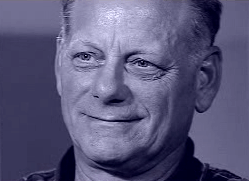 |
is a noted software engineer, designer and developer of several operating systems including the RSX-11, VMS and VAXELN systems of Digital Equipment Corporation and Windows NT from Microsoft
|
| Dave Cutler (1942) | |
 |
was the founder and president of Micro Instrumentation and Telemetry Systems (MITS) which built the Altair 8800, one of the very first hobbyist personal computers
|
| Ed Roberts (1942) | |
 |
|
| Brian Kernighan (1942) | |
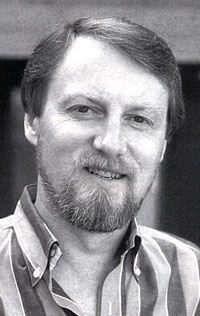 |
created the CP/M operating system and founded Digital Research, Inc.
|
| Gary Kildall (1942-1994) | |
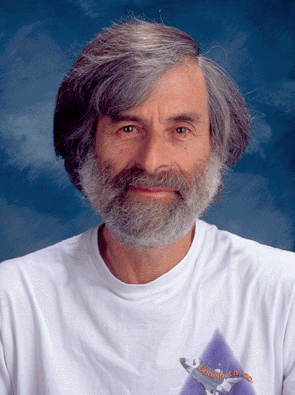 |
his research contributions have laid the foundations of the theory of distributed systems
|
| Leslie Lamport (1941) | |
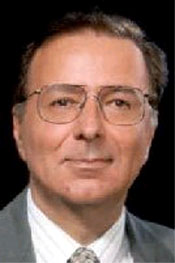 |
received a patent for the first computer microprocessor
|
| Federico Faggin (1941) | |
|
|
|
| Alfred Aho (1941) | |
 |
received the Turing Award in 1996 for seminal work introducing temporal logic into computing science and for outstanding contributions to program and systems verification
|
| Amir Pnueli (1941) | |
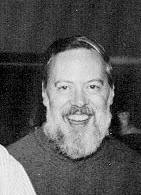 |
is an American computer scientist notable for his influence on ALTRAN, B, BCPL, C, Multics, and Unix
|
| Dennis Ritchie (1941-2011) | |
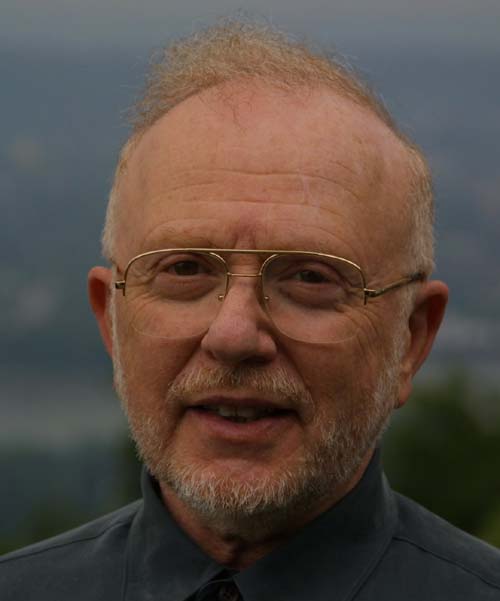 |
|
| David Parnas (1941) | |
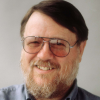 |
|
| Ray Tomlinson (1941) | |
 |
|
| Clive Sinclair (1940) | |
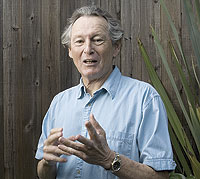 |
is best-known for his development of the first multiple-protocol router software during his 20 year tenure at Stanford University's Knowledge Systems Laboratory
|
| William Yeager (1940) | |
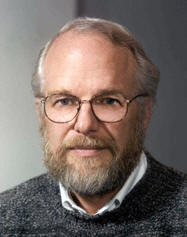 |
is best known as the co-founder with Charles Geschke of Adobe Systems Inc., the graphics and publishing software company
|
| John Warnock (1940) | |
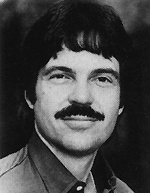 |
is known for his early work on object-oriented programming and user interface design
|
| Alan Kay (1940) | |
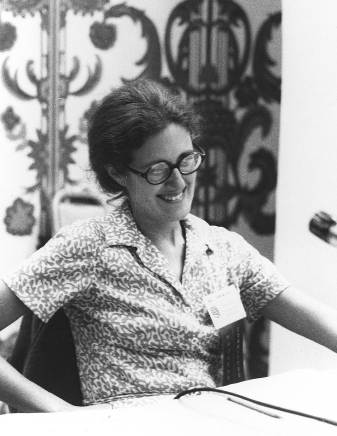 |
became the first woman in the United States to be awarded a PhD in Computer Science, in 1968 from Stanford University. She has led many significant projects, including the design and implementation of CLU, the first programming language to support data abstraction; Argus, the first high-level language to support implementation of distributed programs; and Thor, an object-oriented database system. With Jeannette Wing, she developed a particular definition of subtyping, commonly known as the Liskov substitution principle
|
| Barbara Liskov (1939) | |
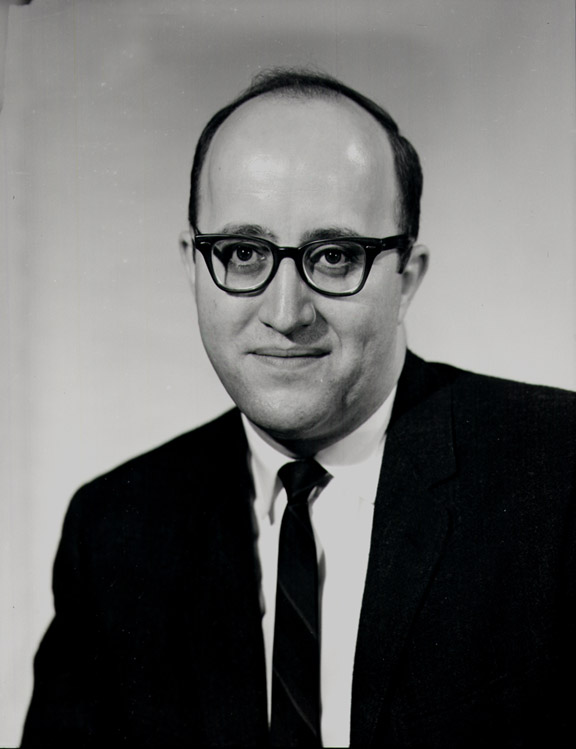 |
is famous for inventing two data sorting structures: the B-tree with Edward M. McCreight, and later the UB-tree with Volker Markl
|
| Rudolf Bayer (1939) | |
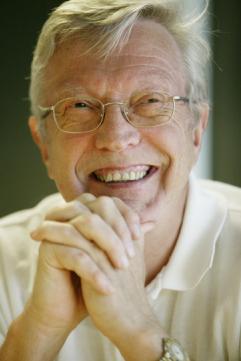 |
|
| Ivar Jacobson (1939) | |
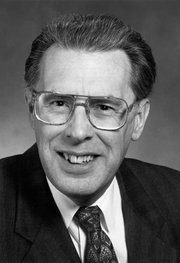 |
received the Turing Award "for fundamental achievements in the design and analysis of algorithms and data structures"
|
| John Hopcroft (1939) | |
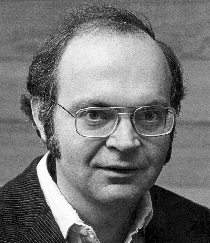 |
is the author of the seminal multi-volume work The Art of Computer Programming
|
| Donald Knuth (1938) | |
 |
|
| Per Brinch Hansen (1938) | |
 |
|
| Stewart Brand (1938) | |
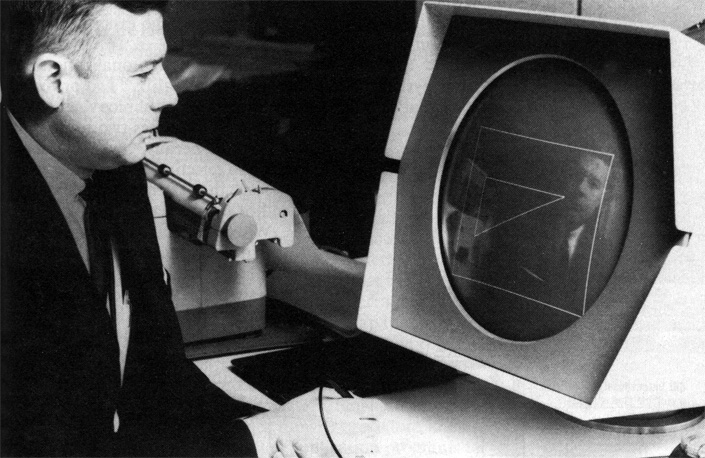 |
received the Turing Award in 1988 for the invention of Sketchpad, an early predecessor to the graphical user interface that became ubiquitous in personal computers
|
| Ivan Sutherland (1938) | |
 |
invented the TCP protocol, and along with Vinton G. Cerf created the IP protocol, the technologies used to transmit information on the Internet
|
| Bob Kahn (1938) | |
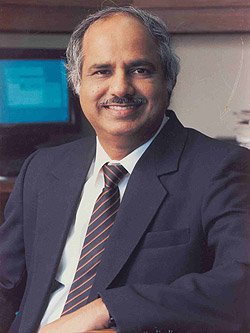 |
is a world-renowned researcher in Artificial Intelligence, Robotics, and Human-Computer Interaction
|
| Raj Reddy (1937) | |
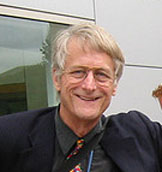 |
coined the term "hypertext" in 1963 and published it in 1965. He also is credited with first use of the words hypermedia, transclusion, virtuality, intertwingularity and teledildonics
|
| Ted Nelson (1937) | |
 |
led development of the original IBM Personal Computer (PC), and thus is known as "father of the IBM PC"
|
| Don Estridge (1937-1985) | |
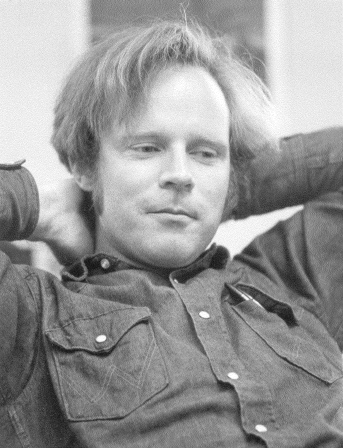 |
his contributions include the design of Floyd's algorithm, which efficiently finds all shortest paths in a graph, and work on parsing. In one isolated paper he introduced the important concept of error diffusion for rendering images, also called Floyd-Steinberg dithering (though he distinguished dithering from diffusion)
|
| Robert Floyd (1936-2001) | |
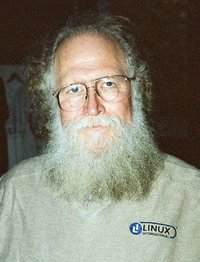 |
|
| Jon Hall | |
 |
is often called the "Father of expert systems"
|
| Edward Feigenbaum (1936) | |
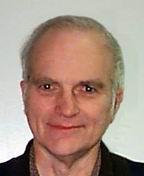 |
with Juris Hartmanis, received the 1993 ACM Turing Award "in recognition of their seminal paper which established the foundations for the field of computational complexity theory"
|
| Richard Stearns (1936) | |
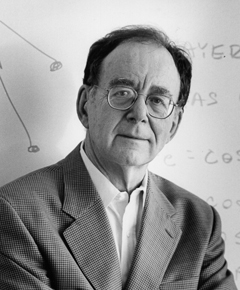 |
is a computer scientist and computational theorist, notable for research in the theory of algorithms, for which he received a Turing Award in 1985
|
| Richard Karp (1935) | |
|
is a leading computer engineer and manager, an early employee of Digital Equipment Corporation (DEC) who designed several of their PDP machines and later rose to Vice President of Engineering and oversaw the development of the VAX
|
|
| Gordon Bell (1934) | |
 |
invented liquid crystal display or LCD
|
| James Fergason (1934) | |
 |
was the chief designer of the programming languages Euler, Algol W, Pascal, Modula, Modula-2, and Oberon
|
| Niklaus Wirth (1934) | |
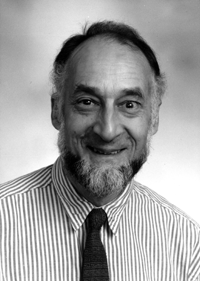 |
developed LCF, one of the first tools for automated theorem proving. The language he developed for LCF, ML, was the first language with polymorphic type inference and type-safe exception handling. In a very different area, Milner also developed a theoretical framework for analyzing concurrent systems, the Calculus of Communicating Systems (CCS), and its successor, the pi-calculus
|
| Robin Milner (1934) | |
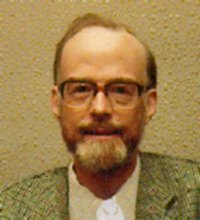 |
is probably best known for the development of Quicksort, the world's most widely used sorting algorithm. He also developed Hoare logic, and the formal language Communicating Sequential Processes (CSP) used to specify the interactions of concurrent processes (including the Dining philosophers problem) and the inspiration for the Occam programming language
|
| Tony Hoare (1934) | |
 |
was the primary architect behind the IEEE 754 standard for floating-point computation (and its radix-independent follow-on, IEEE 854) and developed the Kahan summation algorithm, an important algorithm for minimizing error introduced when adding a sequence of finite precision floating point numbers
|
| William Kahan (1933) | |
 |
his work on automata theory earned him the Turing Award in 1976, while his collaborative work with Christopher Strachey in the 1970s laid the foundations of modern approaches to the semantics of programming languages
|
| Dana Scott (1932) | |
 |
her achievements include seminal work in compilers, code optimization, and parallelization
|
| Fran Allen (1932) | |
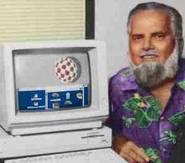 |
|
| Jay Miner (1932-1994) | |
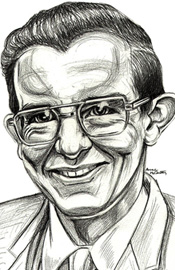 |
invented the compact disc
|
| James Russell (1931) | |
 |
received the Turing award with Dana Scott for their joint paper "Finite Automata and Their Decision Problem," which introduced the idea of nondeterministic machines
|
| Michael Rabin (1931) | |
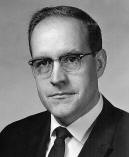 |
is a software engineer and computer scientist, best-known for managing the development of OS/360, then later writing candidly about the process in his seminal book The Mythical Man-Month
|
| Fred Brooks (1931) | |
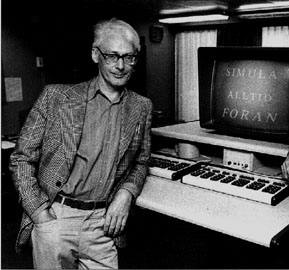 |
is considered to be one of the fathers of Simula and object-oriented programming along with Kristen Nygaard
|
| Ole-Johan Dahl (1931-2002) | |
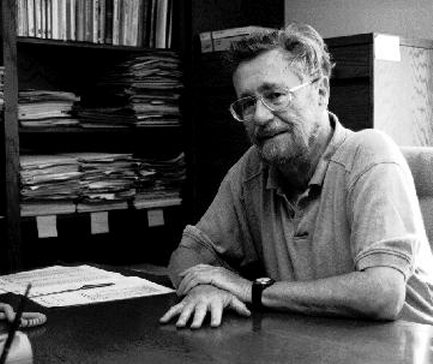 |
among his contributions to computer science is the shortest path-algorithm, also known as Dijkstra's algorithm, the THE multiprogramming system, and the semaphore construct, for coordinating multiple processors and programs
|
| Edsger Dijkstra (1930-2002) | |
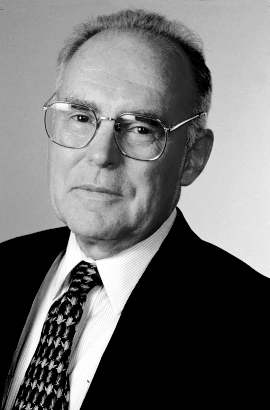 |
is the co-founder and Chairman Emeritus of Intel Corporation and the author of Moore's law
|
| Gordon Moore (1929) | |
 |
with Richard E. Stearns, received the 1993 Turing Award "in recognition of their seminal paper which established the foundations for the field of computational complexity theory"
|
| Juris Hartmanis (1928) | |
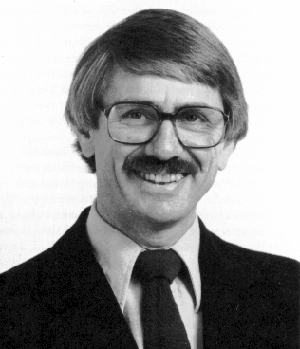 |
co-developed the BASIC programming language in 1963/64, together with John George Kemeny
|
| Thomas Eugene Kurtz (1928) | |
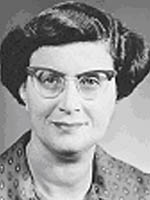 |
|
| Jean E. Sammet (1928) | |
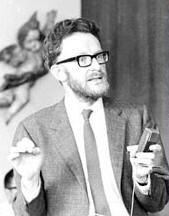 |
his last name is the N in the BNF notation (Backus-Naur form), used in the description of the syntax for most programming languages. He contributed to the creation of the ALGOL 60 programming language
|
| Peter Naur (1928) | |
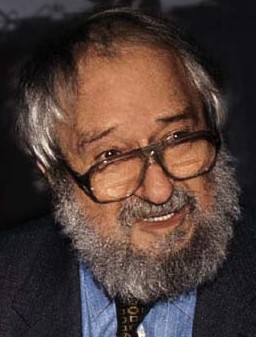 |
is one of the pioneers of artificial intelligence, as well as an inventor of the Logo programming language
|
| Seymour Papert (1928) | |
 |
is an American cognitive scientist in the field of artificial intelligence (AI), co-founder of MIT's AI laboratory, and author of several texts on AI and philosophy
|
| Marvin Minsky (1927) | |
 |
was responsible for the coining of the term "Artificial Intelligence" in his 1955 proposal for the 1956 Dartmouth Conference and invented the Lisp programming language
|
| John McCarthy (1927) | |
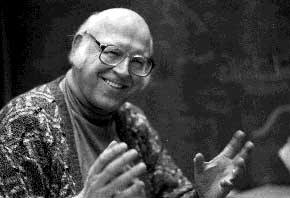 |
contributed to the Information Processing Language (1956) and two of the earliest AI programs, the Logic Theory Machine (1956) and the General Problem Solver (1957) (with Herbert Simon)
|
| Allen Newell (1927-1992) | |
 |
|
| Robert Noyce (1927-1990) | |
 |
is a prominent computer scientist, notable as a pioneer in the development of time-sharing operating systems
|
| Fernando Corbató (1926) | |
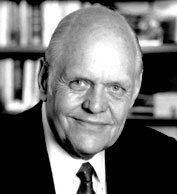 |
|
| Ken Olsen (1926) | |
 |
was one of the developers of packet-switched networks along with Donald Davies and Leonard Kleinrock
|
| Paul Baran (1926) | |
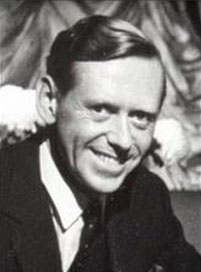 |
|
| John Diebold (1926-2005) | |
 |
is acknowledged as the co-inventor of object-oriented programming and the programming language Simula with Ole-Johan Dahl in the 1960s
|
| Kristen Nygaard (1926-2002) | |
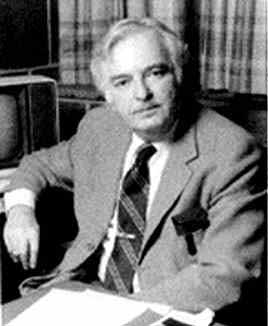 |
is best known for co-developing the BASIC programming language in 1964 with Thomas Eugene Kurtz
|
| John George Kemeny (1926-1992) | |
 |
is best known for inventing the computer mouse (in a joint effort with Bill English); as a pioneer of human-computer interaction whose team developed hypertext, networked computers, and precursors to GUIs
|
| Douglas Engelbart (1925) | |
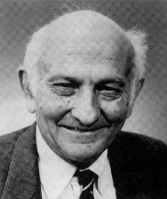 |
is considered by many to be "the father of RISC architecture"
|
| John Cocke (1925-2002) | |
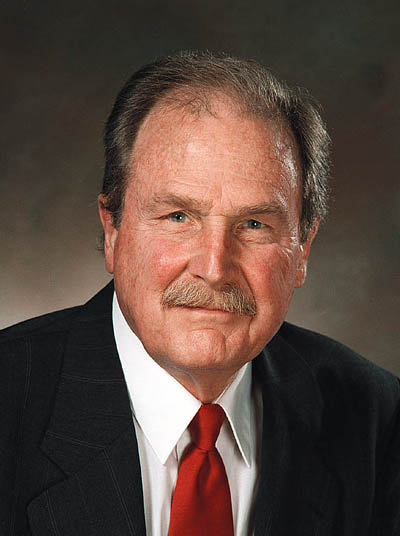 |
is best known for his legendary Huffman code, a compression scheme for lossless variable length encoding
|
| David A. Huffman (1925-1999) | |
 |
was a U.S. electrical engineer and supercomputer architect who founded the company Cray Research
|
| Seymour Cray (1925-1996) | |
 |
together with Klaus Samelson invented the stack machine, a fundamental device for both theory and practice of programming
|
| Friedrich Ludwig Bauer (1924) | |
 |
|
| Donald D. Chamberlin (1924) | |
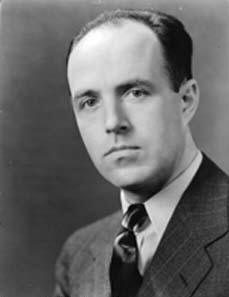 |
developed the IDS (Integrated Data Store), one of the first database management systems
|
| Charles Bachman (1924) | |
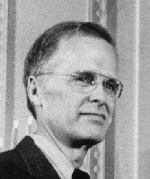 |
led the team that invented the first widely used high-level programming language (FORTRAN) and was the inventor of the Backus-Naur form (BNF), the almost universally used notation to define formal language syntax
|
| John Backus (1924-2007) | |
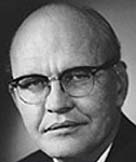 |
invented the integrated circuit in 1958 while working at Texas Instruments, as well as the handheld calculator and thermal printer
|
| Jack Kilby (1923-2005) | |
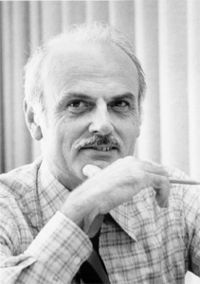 |
made seminal contributions to the theory of relational databases
|
| Edgar F. Codd (1923-2003) | |
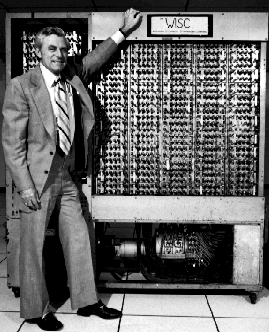 |
|
| Gene Amdahl (1922) | |
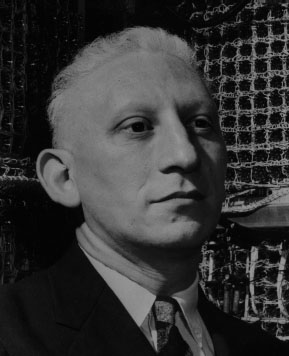 |
was awarded the first Turing Award in 1966, according to the citation, for his influence in the area of advanced programming techniques and compiler construction. This is a reference to the work he had done as a member of the team that developed the ALGOL programming language
|
| Alan Perlis (1922-1990) | |
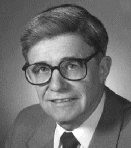 |
developed the APL programming language, was honored with the Turing Award in 1979 for his contributions to mathematical notation and programming language theory
|
| Kenneth E. Iverson (1920-2004) | |
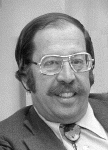 |
|
| Bob Bemer (1920- 2004) | |
 |
|
| John Presper Eckert (1919-1995) | |
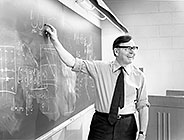 |
discovered many significant algorithms
|
| James H. Wilkinson (1919-1986) | |
 |
|
| Herb Grosch (1918) | |
 |
|
| Jay Forrester (1918) | |
 |
helped John Vincent Atanasoff create the first digital electronic computer in 1939, the Atanasoff-Berry Computer
|
| Clifford Berry (1918-1963) | |
 |
was one of the programmers for the ENIAC computer
|
| Betty Holberton (1917-2001) | |
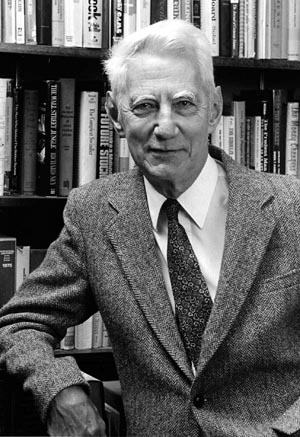 |
has been called "the father of information theory", and was the founder of practical digital circuit design theory
|
| Claude Shannon (1916-2001) | |
 |
was among the founding fathers of several of today's most important scientific domains, including Artificial Intelligence, information processing, decision-making, problem-solving, attention economics, organization theory, complex systems, and computer simulation of scientific discovery
|
| Herbert Simon (1916-2001) | |
 |
|
| Christopher Strachey (1916-1975) | |
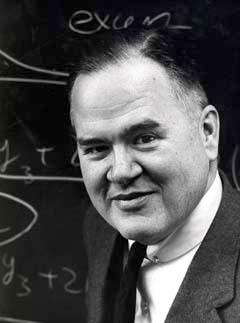 |
|
| John Tukey (1915-2000) | |
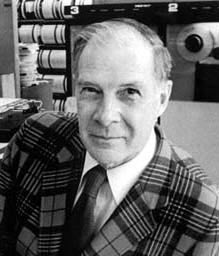 |
was an American mathematician whose work had many implications for computer science and telecommunications. His contributions include the Hamming code (which makes use of a Hamming matrix), the Hamming window (described in section 5.8 of his book Digital Filters), Hamming numbers, Sphere-packing (or hamming bound) and the Hamming distance
|
| Richard Hamming (1915-1998) | |
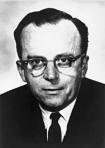 |
|
| J. C. R. Licklider (1915-1990) | |
 |
developed the concept of microprogramming from the realisation that the Central Processing Unit of a computer could be controlled by a miniature, highly specialised computer program in high-speed ROM
|
| Maurice Vincent Wilkes (1913) | |
 |
|
| William Hewlett (1913-2001) | |
 |
William Hewlett founded HP, the company that grew into the world's largest producer of electronic testing and measurement devices
|
| David Packard (1912-1996) | |
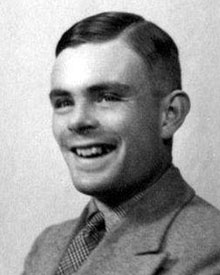 |
is often considered to be the father of modern computer science. Turing provided an influential formalisation of the concept of the algorithm and computation with the Turing machine, formulating the now widely accepted "Turing" version of the Church–Turing thesis, namely that any practical computing model has either the equivalent or a subset of the capabilities of a Turing machine. With the Turing test, he made a significant and characteristically provocative contribution to the debate regarding artificial intelligence
|
| Alan Turing (1912-1954) | |
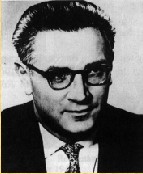 |
created the first functional program-controlled machine, the Z3, in 1941
|
| Konrad Zuse (1910-1995) | |
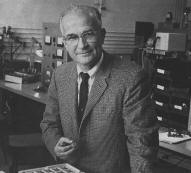 |
co-invented the transistor
|
| William Shockley (1910-1989) | |
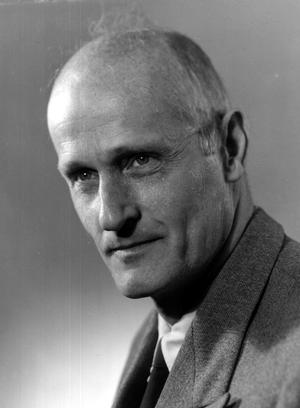 |
was best known for founding the branch of mathematical logic known as recursion theory together with Alonzo Church, Kurt Gödel, Alan Turing, Emil Post, and others; and for inventing regular expressions. By providing methods of determining which problems are solvable, Kleene's work led to the study of which functions are computable
|
| Stephen Cole Kleene (1909-1994) | |
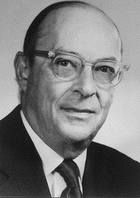 |
invented the transistor, along with William Bradford Shockley and Walter Brattain
|
| John Bardeen (1908-1991) | |
|
was an Austrian inventor born in Vienna. Among his innovations were printing techniques which later became important in electrical and electronics manufacturing
|
|
| Paul Eisler (1907-1995) | |
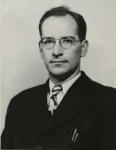 |
|
| John Mauchly (1907-1980) | |
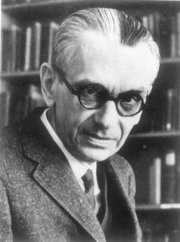 |
is best known for his two incompleteness theorems
|
| Kurt Gödel (1906-1978) |
|
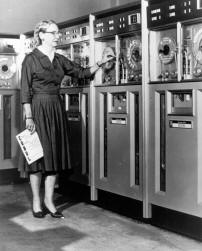 |
was one of the first programmers of the Harvard Mark I calculator, and she developed the first compiler for a computer programming language
|
| Grace Hopper (1906-1992) |
|
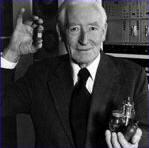 |
|
| Tommy Flowers (1905-1998) |
|
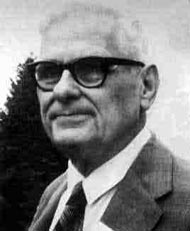 |
created lambda calculus, formulated Church's thesis and Church's theorem
|
| Alonzo Church (1905-1995) |
|
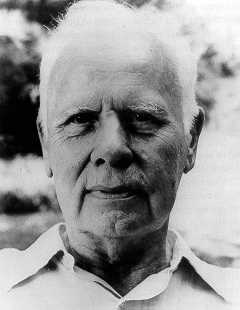 |
was a Bell Labs researcher known for his 1930s and 1940s work on the realization of Boolean logic digital circuits using electromechanical relays as the switching element
|
| George Stibitz (1904-1995) |
|
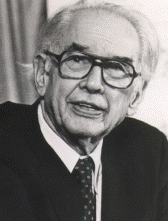 |
was the inventor of the first automatic electronic digital computer, a special-purpose machine that has come to be called the Atanasoff-Berry Computer
|
| John Vincent Atanasoff (1903-1995) | |
 |
was widely influential within cybernetics, systems theory and complex systems
|
| William Ross Ashby (1903-1972) |
|
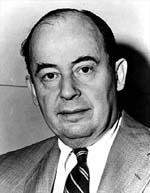 |
described a computer architecture in which data and program memory are mapped into the same address space. This architecture became the de facto standard
|
| John von Neumann (1903-1957) |
|
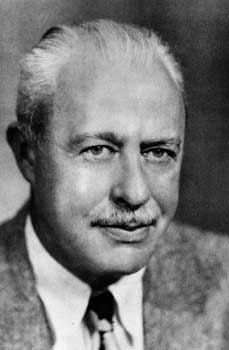 |
was a physicist at Bell Labs who, along with John Bardeen and William Shockley invented the transistor
|
| Walter Houser Brattain (1902-1987) | |
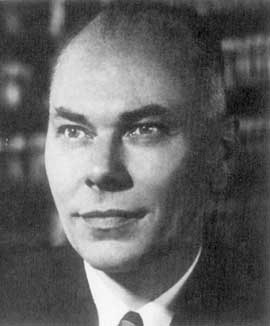 |
was a pioneer in computing, being the primary engineer behind IBM's Harvard Mark I computer
|
| Howard Aiken (1900-1973) |
|
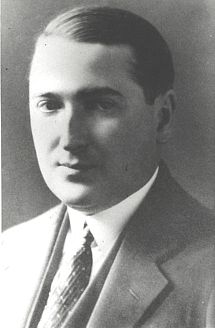 |
developed, independently of Alan Turing's Turing machine model, an essentially equivalent model
|
| Emil Leon Post (1897-1954) |
|
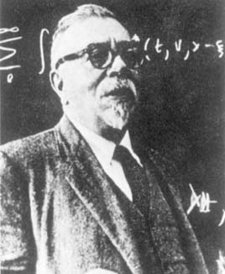 |
is perhaps best known as the founder of cybernetics, a field that formalizes the notion of feedback and has implications for engineering, systems control, computer science, biology, philosophy, and the organization of society
|
| Norbert Wiener (1894-1964) | |
 |
introduced the concept of what he called the memex in the 1930s, a microfilm-based "device in which an individual stores all his books, records, and communications, and which is mechanized so that it may be consulted with exceeding speed and flexibility"
|
| Vannevar Bush (1890-1974) |
|
 |
was the president of International Business Machines (IBM), who oversaw that company's growth into an international force from the 1920s to the 1950s
|
| Thomas J. Watson (1874-1956) |
|
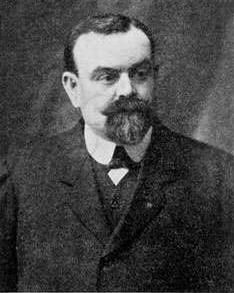 |
designed three calculating machines: the Direct Multiplier, the Calculating Board and the Arithmographe
|
| Léon Bollée (1870-1913) |
|
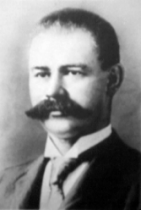 |
was an American statistician who developed a mechanical tabulator based on punched cards to rapidly tabulate statistics from millions of pieces of data
|
| Herman Hollerith (1860-1929) |
|
 |
is the inventor of the Odhner Arithmometer, a mechanical calculator
|
| Theophil Wilgodt Odhner (1845-1903) |
|
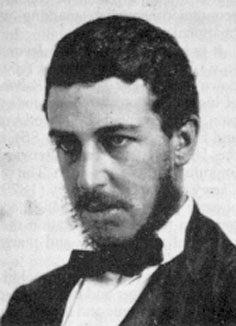 |
constructed a logical machine, called the Logic Piano
|
| William Stanley Jevons (1835-1882) |
|
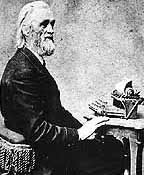 |
designed the QWERTY keyboard
|
| Christopher Latham Sholes (1819-1890) |
|
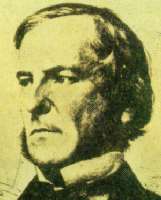 |
is the inventor of Boolean algebra, the basis of all modern computer arithmetic
|
| George Boole (1815-1864) |
|
 |
is mainly known for having written a description of Charles Babbage's early mechanical general-purpose computer, the analytical engine
|
| Ada Lovelace (1815-1852) |
|
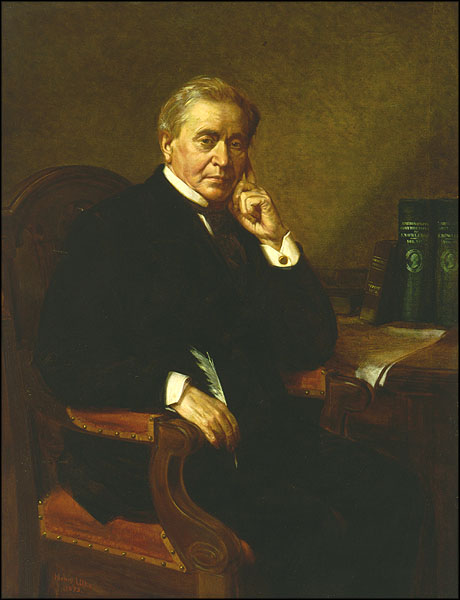 |
invented the electromechanical relay in 1835
|
| Joseph Henry (1797-1878) |
|
 |
designed the first programmable computer
|
| Charles Babbage (1791-1871) |
|
|
designed and patented the Arithmometer, in 1820. It was the first successful mechanical calculator that could add, subtract, and multiply
|
|
| Charles Xavier Thomas de Colmar (1785-1870) |
|
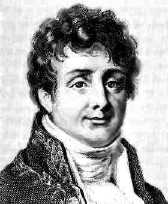 |
|
| Joseph Fourier (1768-1830) |
|
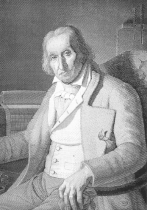 |
improved on the original punched card design of Jacques de Vaucanson's loom of 1745, to invent the Jacquard loom mechanism in 1804-1805
|
| Joseph Marie Jacquard (1752-1834) |
|
|
designed the first functional mechanical calculator
|
|
| Mathieus Hahn (1739-1790) |
|
 |
discovered the binary number system, anticipated Lagrangian interpolation, algorithmic information theory, and invented the calculus ratiocinator as well as a machine that could execute all four arithmetical operations, the Stepped Reckoner
|
| Gottfried Wilhelm Leibniz (1646-1716) |
|
 |
constructed a mechanical calculator capable of addition and subtraction, called the Pascaline
|
| Blaise Pascal (1623-1662) |
|
 |
built the first automatic calculator in 1623
|
| Wilhelm Schickard (1592-1635) |
|
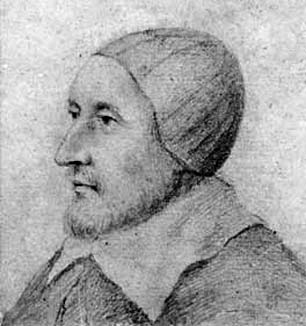 |
is credited as the inventor of the slide rule
|
| William Oughtred (1575-1660) |
|
 |
invented Napier's bones, a multiplication aid
|
| John Napier (1550-1617) |
|
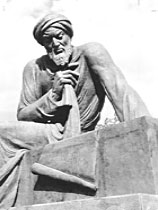 |
the word algebra is derived from al-jabr, one of the two operations used to solve quadratic equations, as described in his book. The word algorithm stems from algoritmi, the Latinization of his name
|
| Al-Khawarizmi (780-850) |